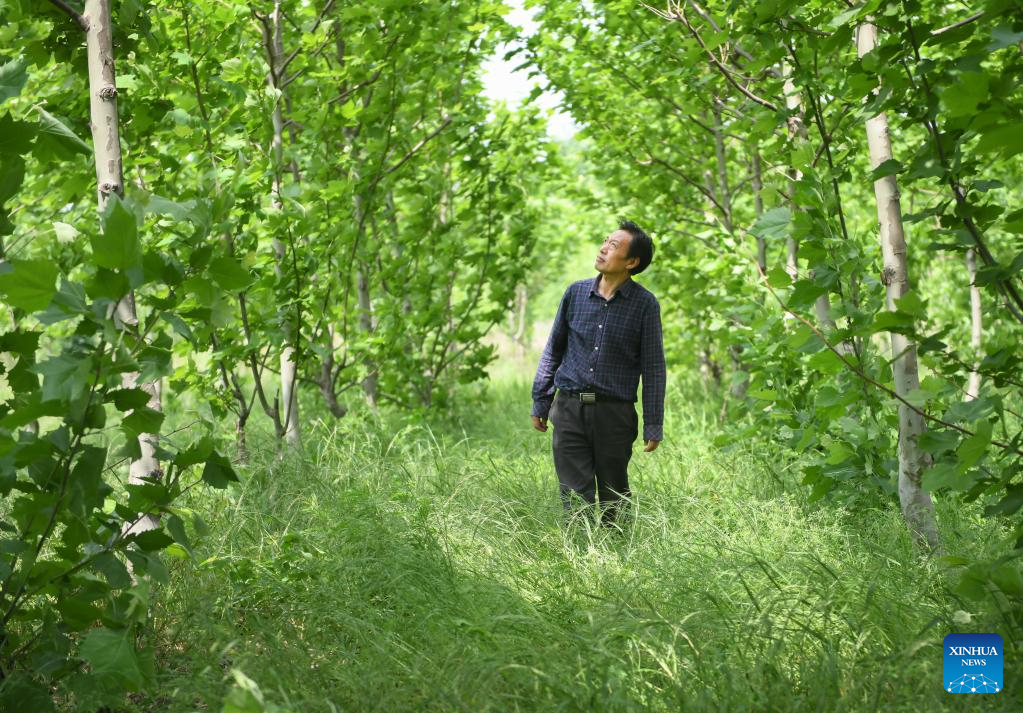Across China: Forestry expert's 30-year pursuit of 'hairless' planetrees


WUHAN -- Bao Manzhu, a professor of forestry, is intently observing a verdant tree sapling in his planetree breeding base at Huazhong Agricultural University in Wuhan, capital of central China's Hubei Province.
For 30 years, Bao has been dedicated to reducing the annoying "hairs" or catkins of the London Planetree, a type of widely planted tree on streets in China.
The planetree has many advantages. With a giant crown, the tree creates extensive shade in summer. And it is easy to grow these trees as they adapt well to polluted environments and various soils.
However, every April to June, the catkins of these trees fly everywhere in the city, causing allergies and upper respiratory tract infections for many people.
In the eastern Chinese city of Nanjing, over 80,000 such trees are planted along the roadsides in the downtown area. During the catkin-shedding season, tonnes of tree "hairs" have to be cleaned away each day, which poses a heavy workload for cleaners.
"The 'hairs' with the scientific name of trichome are from cracked fruits and fuzzy leaves of the trees," said Bao, adding that a mature London Planetree alone will create 300 to 400 million hairs from its fruits every year.

"This tree is a new cultivar of London Planetree named 'Huanong Qinglong.' It measures 21 cm in diameter at breast height, and it grows very well with strong branches and fewer twigs," Bao said, referring to a cultivar created by his team, and adding that last year this tree only bore 80 fruits, and its 'hairs' were reduced by 90 percent, making it suitable to be planted in a residential community.
Over the past three decades, Bao and his team did field investigations in many Chinese provinces and collected over 500 samples of rare planetree varieties featuring lateness in flowering and small quantities in fruiting.
Through introduction, cuttage, grafting, seedling selection and ploidy breeding, seven new cultivars were developed and accredited national new plant breeders' rights. These new cultivars produce 80 to 90 percent fewer hairs than regular London Planetrees.
To date, a dozen cities in China including Shanghai, Nanjing and Wuhan are testing and promoting the new planetree cultivars by directly planting the saplings or grafting the new cultivars onto the existing trees.
"I believe that the new cultivars will be popular in more and more cities. And it's my dream to make the London plane a perfect tree alongside the streets," said Bao.





































